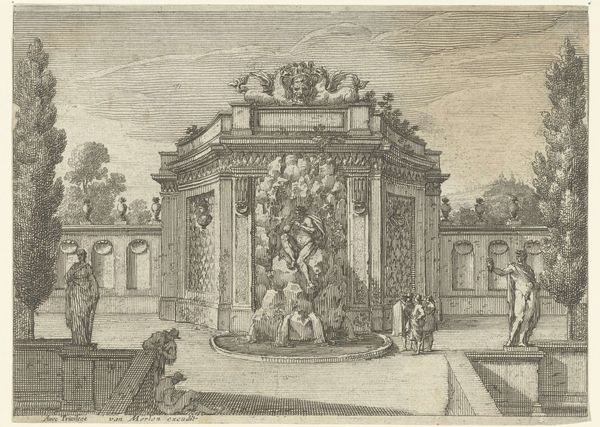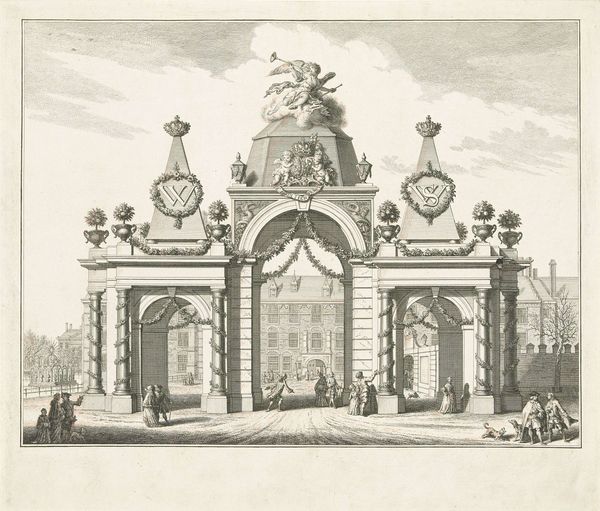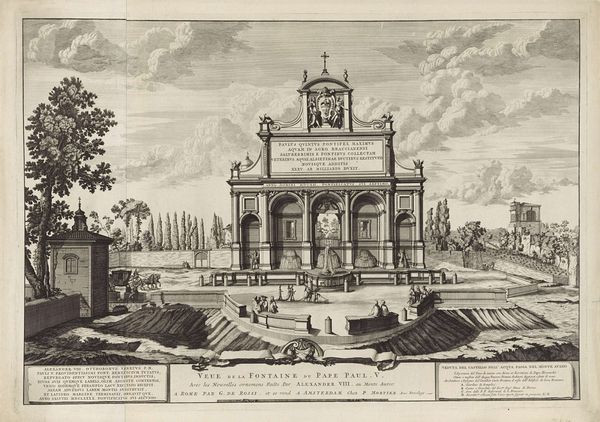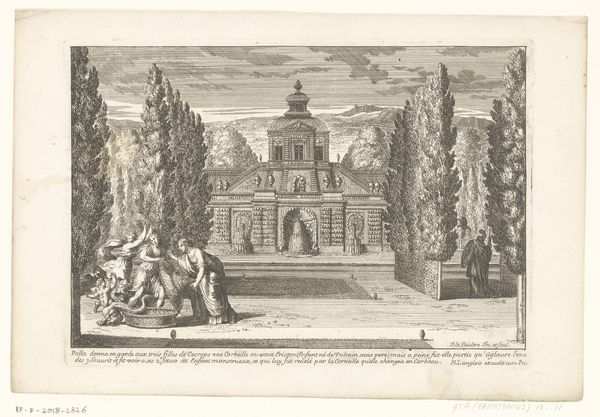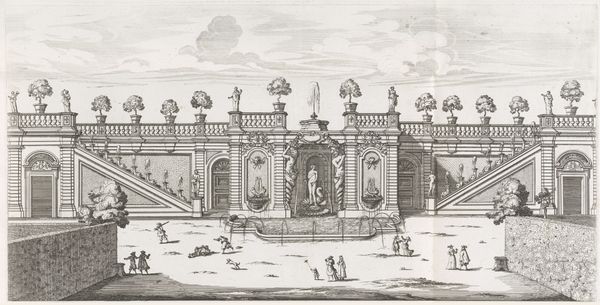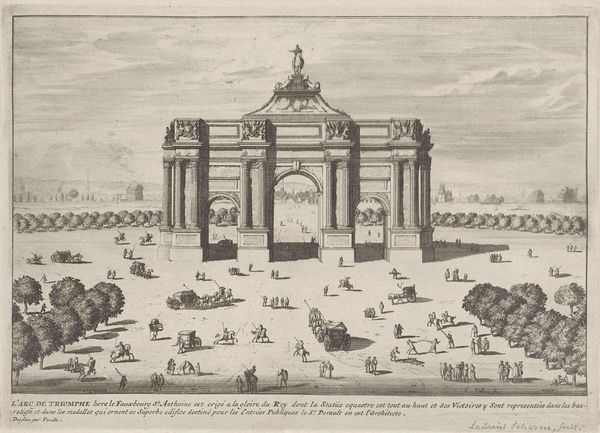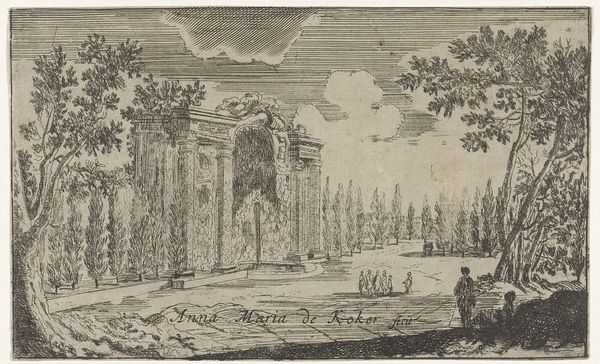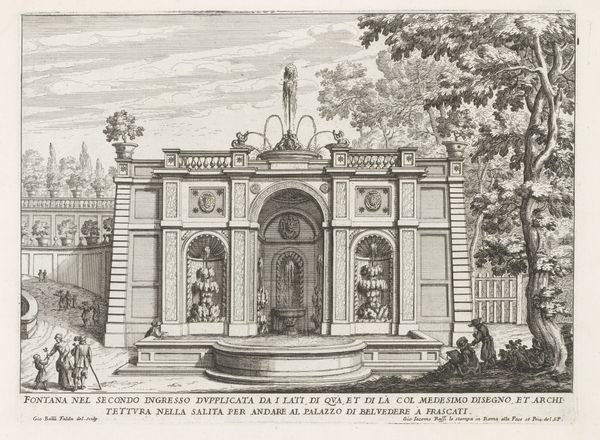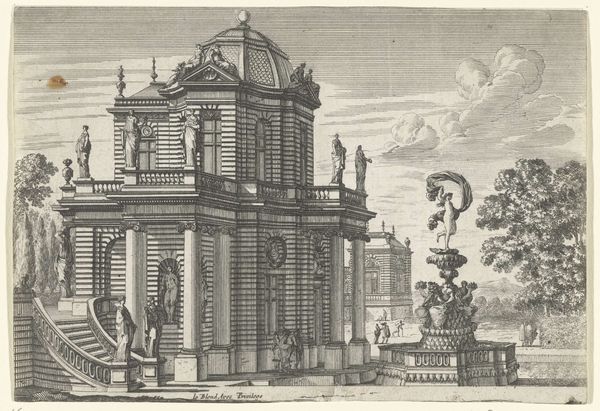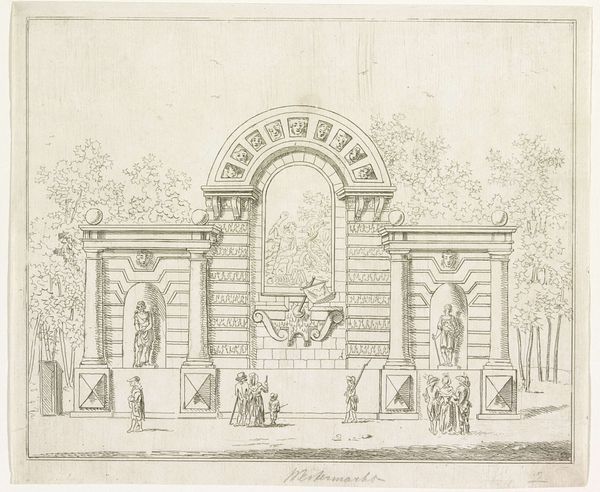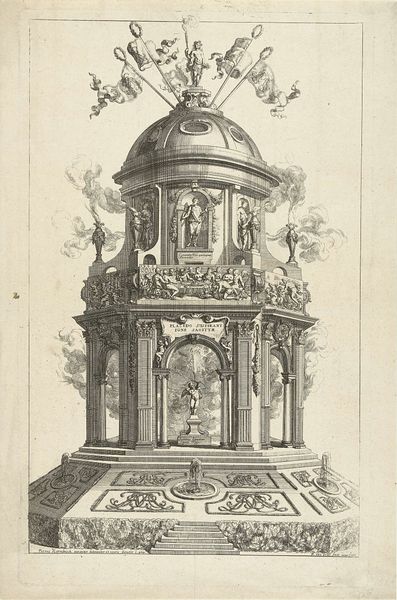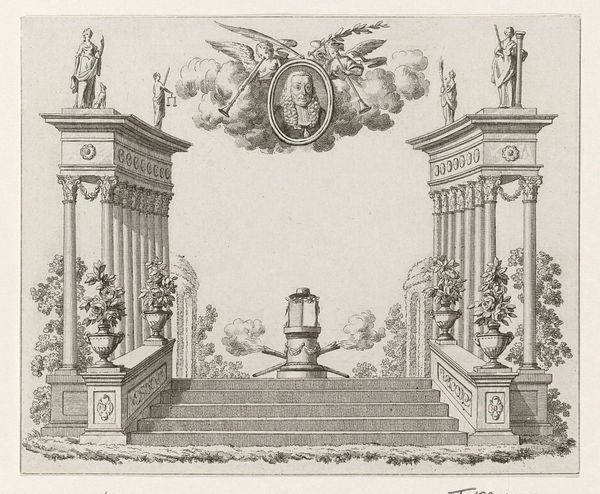
engraving, architecture
#
aged paper
#
baroque
#
old engraving style
#
landscape
#
cityscape
#
engraving
#
architecture
Dimensions: height 225 mm, width 317 mm
Copyright: Rijks Museum: Open Domain
Curator: Let's discuss this piece, "Tuindecoratie in de vorm van triomfboog," an engraving created before 1657 by an anonymous artist. Editor: It's surprisingly engaging for what it is—an engraving. The textures practically leap off the aged paper. The overall symmetry is extremely well executed, producing a great level of artistic depth for a mere landscaping plan. Curator: Indeed. Its formal qualities reveal much about Baroque aesthetics, the carefully delineated landscape, and the structure of the triumphal arch, an allegorical element celebrating power, achievement, perhaps, a moral and/or physical victory? Editor: Looking at this triumphal arch, I think of labor, of course. Look at the people; this is the material culture of making. How did this design become physical, at human scale, and what sorts of technologies would that kind of process involve? I notice details like the rendering of foliage which must've taken a huge degree of artisanry, never mind building it! Curator: Observe the balanced composition, and its linear precision drawing the eye to the arch. Semiotically, this ordered, man-made architecture imposes on the unruliness of nature itself, or vice-versa. The landscape is itself arranged and formal, as we see in the bordering copse of carefully arranged trees! There are hierarchies at work both pictorially and spatially, here. Editor: But I wonder about accessibility. The elite are on horseback, enjoying the architecture while some other folk are tending to animals at the margin. It’s worth considering the production chain—who built it and who it was for— and whether the social values inherent to its use are encoded in the design, since this an artwork on its own. Curator: An important point about labor relations! To return to form: consider how the lines give us shape, light, and shadow, and the perspective invites us to think about the relationship between foreground and background as representing real-world social divisions, but through the artist’s decisions. Editor: Well, the means of representing the image had its limits, too, for sure. The engraver is interpreting something physical. Seeing the different kinds of labor pictured here, I would find it difficult not to recognize a claim of art's laboriousness, not despite it being representational but precisely because the engraver worked hard to create a perfect illusion of an image! Curator: Fascinating. On balance, it underscores that analyzing the structure helps unpack meaning. Editor: Agreed! The convergence between artistic license and material constraints in its making tells us a different kind of story.
Comments
No comments
Be the first to comment and join the conversation on the ultimate creative platform.
